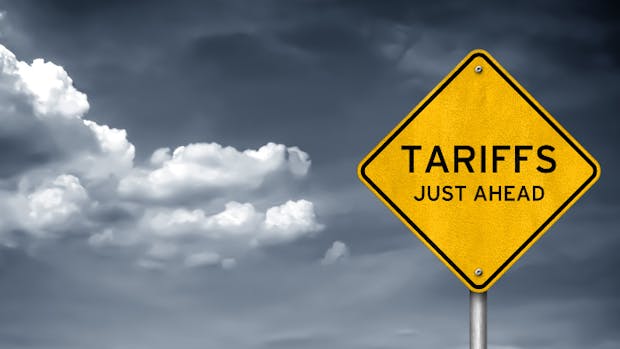Tariffs Alert: New US Tariff Measures Effective Today - What Freight Forwarders Need To Know

As of 7 August 2025, major US tariff measures have come into force, following a series of Executive Orders issued on 30–31 July 2025. These measures introduce a new reciprocal tariff framework and other trade-related changes that have immediate operational implications for freight forwarders and supply chain stakeholders.
These changes mark a significant shift in global trade conditions and require immediate operational attention for affected freight forwarders and supply chain actors. As bilateral negotiations continue, close monitoring of legal and regulatory developments is strongly recommended.
This communication outlines the key updates and practical implications of the new US tariff measures effective from 7 August 2025. It highlights important changes freight forwarders need to be aware of, outlines exemptions, and provides guidance on adapting operational practices. Please refer to the following sections for detailed information.
Key Tariff Changes Effective 7 August 2025
1. Introduction of new “reciprocal tariff” regime
- A baseline 10% tariff now applies to most countries not covered by specific trade agreements. This tariff applies in addition to existing Most Favoured Nation (“MFN”) duties listed in Column 1 of the US Harmonized Tariff Schedule (HTSUS).
- Higher territory-specific rates, ranging from 15% to 50%, apply to over 60 countries, as listed in Annex I of the Executive Order. For European Union-origin goods, a conditional 15% tariff applies if the MFN rate is below 15%. A full summary of affected countries and rate changes is provided at the end of this communication.
2. End of de minimis for non-postal imports
- The USD 800 de minimis exemption no longer applies to goods imported outside the global postal network.
- Entry for all non-postal shipments that prior to the effective date qualified for the de minimis exemption must be filed in the Automated Commercial Environment (ACE) by a party qualified to make such entry.
- For these shipments, forwarders must now apply:Ad valorem duties, based on the applicable reciprocal tariff for the territory of origin.Specific duties of USD 80–200 per item during a six-month transition period (ending 29 February 2026).
3. Copper tariffs increased to 50%
- Tariffs on certain semi-finished and derivative copper products have been raised to 50%.
- The US Department of Commerce is expected to issue domestic content rules within 90 days.
4. Transshipment enforcement strengthened
- Goods determined to have been transhipped to evade applicable duties face an additional 40% penalty tariff, and potential fines or other sanctions.
Tariff Exemptions
The new reciprocal tariffs do not apply to the following:
- Goods loaded onto a vessel at the port of loading and in transit on the final mode of transit before 12:01 a.m. (ET) on August 7, 2025, or (2) entered for consumption, or withdrawn for warehouse for consumption, before 12:01 a.m. (ET) on October 5, 2025. This exception only applies to the higher territory-specific tariffs and does not apply to goods subject to the 10% baseline reciprocal tariffs.
- Articles and derivatives of steel and aluminium that are already subject to Section 232 tariffs
- Automobiles and automobile parts that are subject to Section 232 tariffs at the time of import
- Additional articles listed in Annex II to the original executive order, including pharmaceuticals, semiconductors, lumber articles, certain critical minerals, and energy and energy products.
Practical Guidance for Freight Forwarders
1. Audit risk-exposed shipments and update customs and compliance processes
- Ensure constant classification checks and origin verifications, and brief your clients accordingly to ensure accurate information is provided on shipments.
- Exercise scrutiny on transhipped goods, particularly for high-risk corridors, to avoid being subject to extra 40% duties and penalties.
- Prepare contingency plans for possible tariff adjustments or enforcement actions.
2. Adapt e-commerce & parcel handling workflows
- Update customs declaration, valuation, and duty collection procedures to reflect the removal of the de minimis threshold for non-postal imports.
- Review internal systems for handling B2C and small-parcel traffic.
3. Review and strengthen contracts to accommodate possible changes
- Review contracts with clients and suppliers to manage potential legal, financial and operational risks, in view of ongoing trade negotiations and legal review.
- Include flexible wording in contracts and quotes to accommodate tariff volatility, clarify liability, and support routing or modal adjustments.
4. Prepare for routing and modal shifts
- Be ready to reroute shipments or change transport modes in response to high-tariff lanes.
- Consider the use of bonded warehousing, duty suspension regimes, and multimodal transport documents, such as the electronic FIATA Multimodal Transport Bill of Lading (eFBL), to maintain agility.
5. Engage with your clients on supply chain strategies
- Work proactively with your clients on pricing, duties and sourcing strategies to ensure alignment and facilitate compliance with operational timelines and capacity.
- Support clients in developing contingency plans to address potential tariff reversals or further policy changes.
FIATA continues to follow these developments and advocate for stability and clarity in global logistics operations. Members are encouraged to engage with FIATA and reach out for support in navigating these changes.
Tariff Rate Changes by Territory
See the full list of tariff rate changes by territory here.
Further Information and Resources
For more information, please see the following Executive Orders:
- Further Modifying the Reciprocal Tariff Rates (31 July 2025)
- Suspending Duty-Free De Minimis Treatment for All Countries (30 July 2025)
- Addressing Threats to the United States by the Government of Brazil (30 July 2025)
Members are encouraged to engage with FIATA and reach out for support in navigating these changes. For questions or comments, contact [email protected].